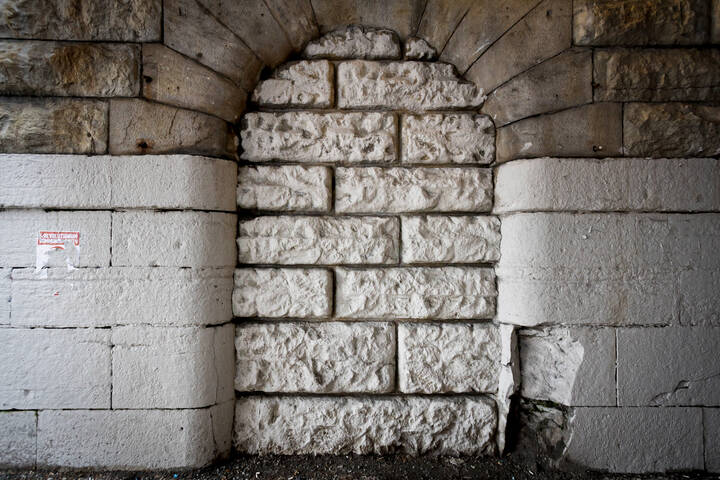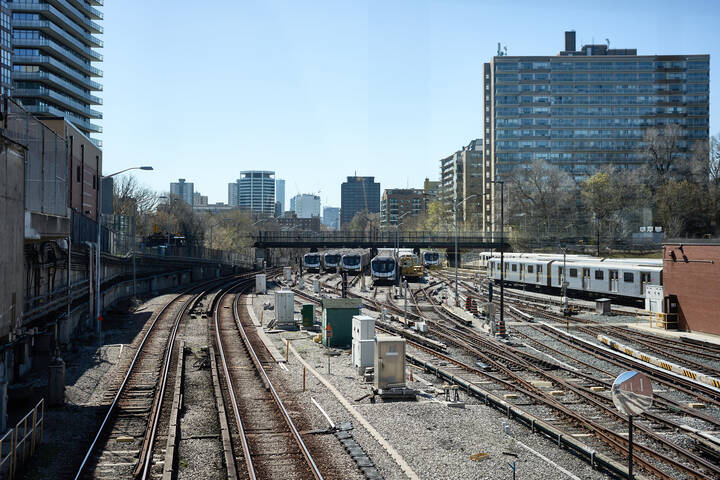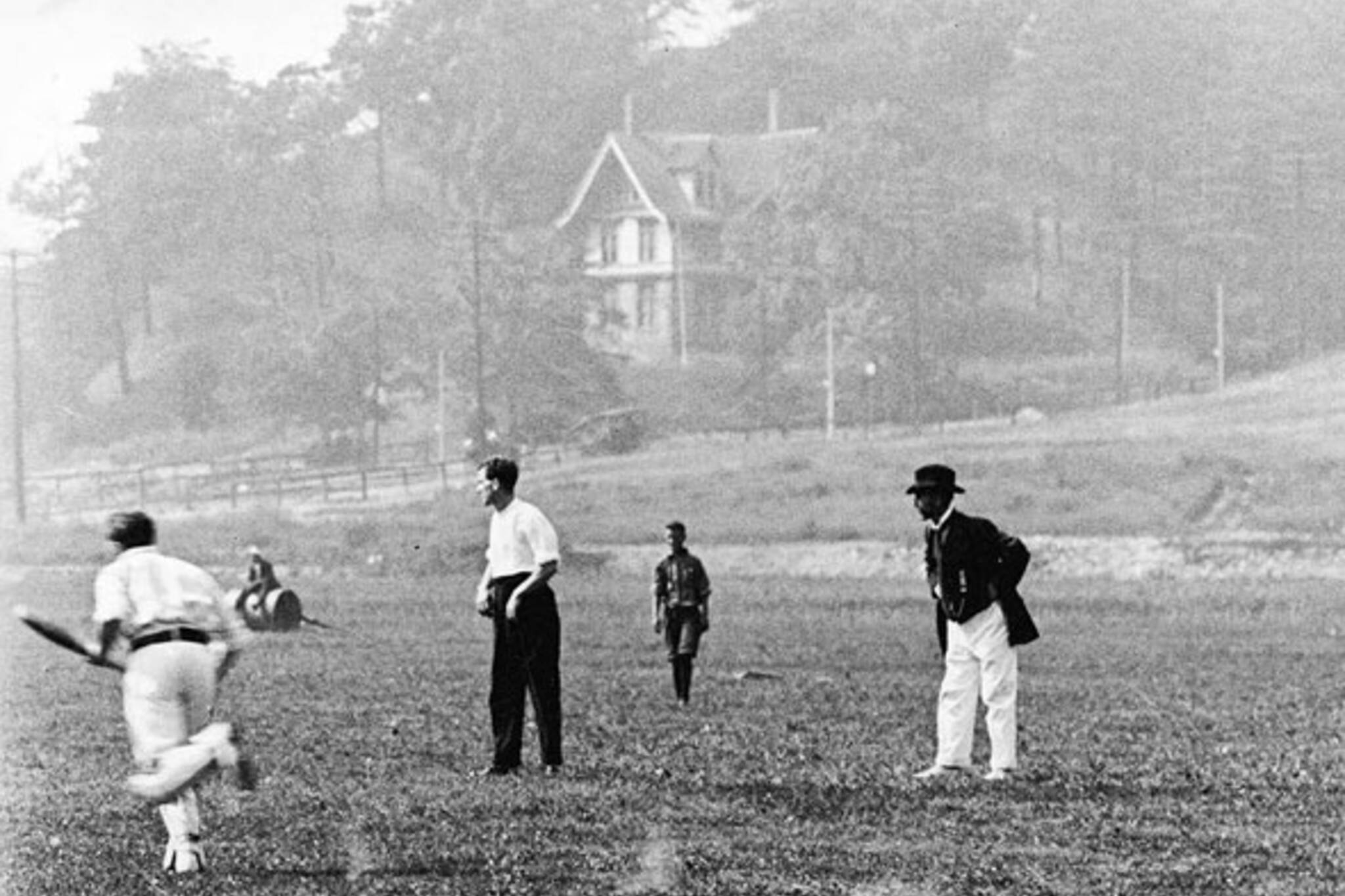
A brief history of disease and isolation in Toronto
Getting sick, running out of cash, or suffering from a mental disability in Toronto a hundred and fifty years ago was the absolute pits. Lack of understanding and provision for society's most needy led to the creation of houses of refuge, places where people with nowhere else to go could hole up. One of these early houses on the banks of the Don near Gerrard Street would evolve into Bridgepoint Health rehabilitation hospital.
Now a premier care facility for people with chronic illnesses, Bridgepoint is currently undergoing a massive $622 million renovation and expansion that will see it absorb the old Don Jail. Thankfully, it's a far cry from its bleak origins.
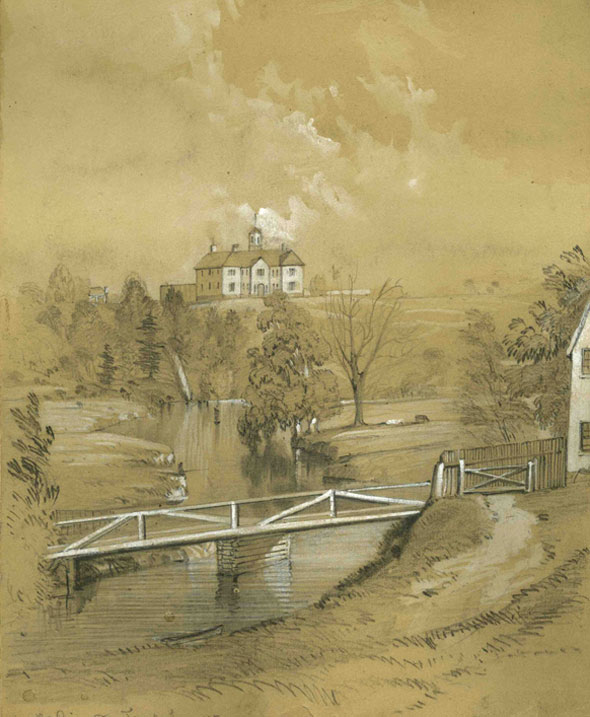
The first building on the site in what is now Riverdale Park was a home built in 1860 for the "deserving poor" - women, children, the elderly or people with physical or mental disabilities - by the Toronto Magdalen Asylum. According to the Don Valley Historical Mapping Project, the overcrowded home sheltered "idiots, the idle, the lewd, the dissolute" so well that visitors were not allowed close to the property. Gifts and messages were literally hurled over the fence in the hopes they would reach the intended recipient.
Overcrowding necessitated the construction of a new three-storey, 26-bed house nearby for needy men. In 1884, the facility became an industrial refuge and set aside space solely for woman in the original building. Industrial refuges gave their residents shelter and clothing in exchange for labour, which often involved farming food for the residents to eat. By 1890 both homes were squalid and beyond capacity.
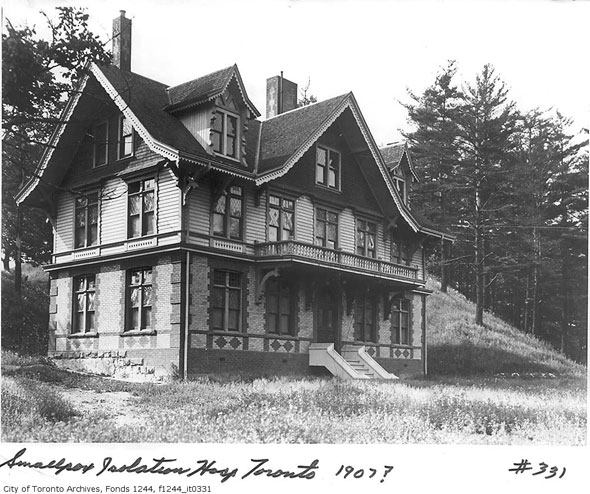
The older of the two labour houses was demolished in 1894 and the newer home converted into an isolation hospital for sufferers of smallpox, tuberculosis and other communicable diseases. In 1899, the building housed sufferers during the first of several outbreaks of the disease.
The Isolation Hospital grew from a single building to encompass several separate homes for sufferers of various illnesses, one of which was the ornate "Swiss Cottage," built in 1904 and shown above. As development of the surrounding neighbourhood increased, concerns grew about the facility's distinct lack of isolation.
In 1886, the city's Medical Officer of Health Dr. William Canniff publicly expressed his worry about the encroaching housing on Broadview Avenue. Prior to that time, this part of the east end was clearly considered a suitable dumping ground for the poor, sick, criminal as the nearby presence of the old Don Jail illustrates.
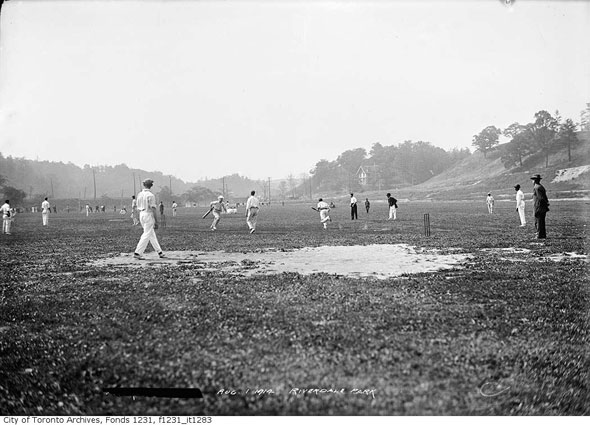
Despite the growing local community, a new, significantly larger complex closer to Gerrard Street was built in various phases in the early part of the 20th century. The Riverdale Isolation Hospital included a nursing school and improved facilities for the treatment of diphtheria, scarlet fever, measles and polio, each housed in a separate structure on the campus. During the great depression, when many went without adequate medical coverage, the city subsidized much of the care at Riverdale.
Advances in medical science and the introduction of vaccination programs gradually reduced cases of many once-serious illnesses, shifting the hospital's focus to long-term care and rehabilitation. The site's polio facility remained, however, and iron lungs were a prominent fixture at the facility until the 1980s when the last one was shipped to Sarajevo in present day Bosnia and Herzegovina.
In 1957, the medical site became simply Riverdale Hospital to reflect its broader, modern coverage. The now-famous Miami-style "half-round" structure arrived in the 1963, adding an additional 800 beds and laying the foundation for a new stroke recovery unit and the site's evolution into present day Bridgepoint Health.
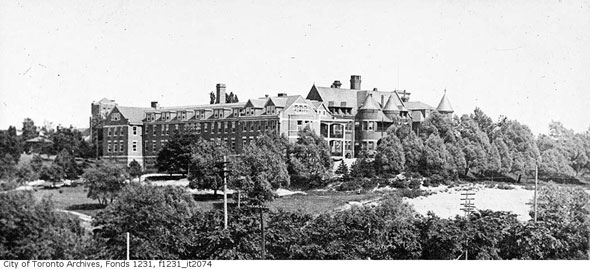
Construction is now well underway on the massive new building just up the hill from the Don Valley Parkway. The 10-storey, 680,000 square foot structure topped out late last year and will soon incorporate the historic portions of the Don Jail when the remaining inmates are transferred out.
Unfortunately, the half-round with its umbrella entrance and interior murals looks doomed to go the way of so many Riverdale Hospital structures. Last ditch efforts to save it seem to only be staving off the inevitable demolition.
When the new-look, LEED-certified Bridgepoint Health with its cafeteria, library, and spectacular city views
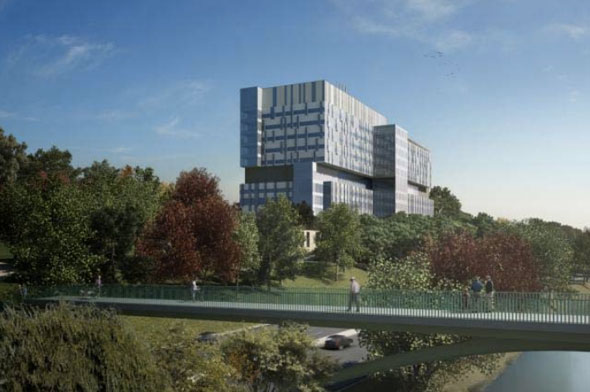
opens next spring it will be a far cry from the dank shack in the woods that started it all.
MORE IMAGES:
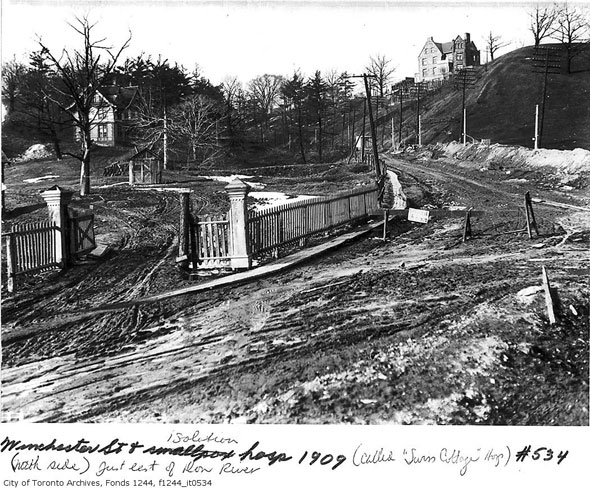
A muddy Winchester Street near Swiss Cottage
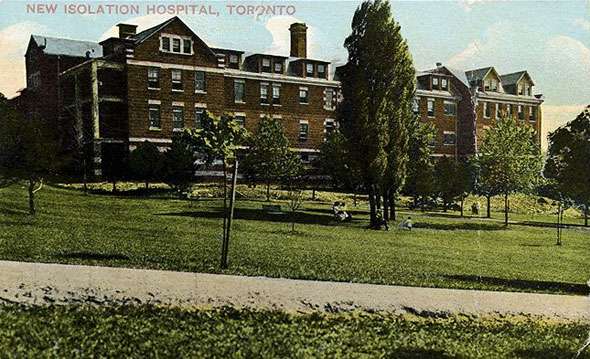
Postcard of buildings near Broadview and Gerrard
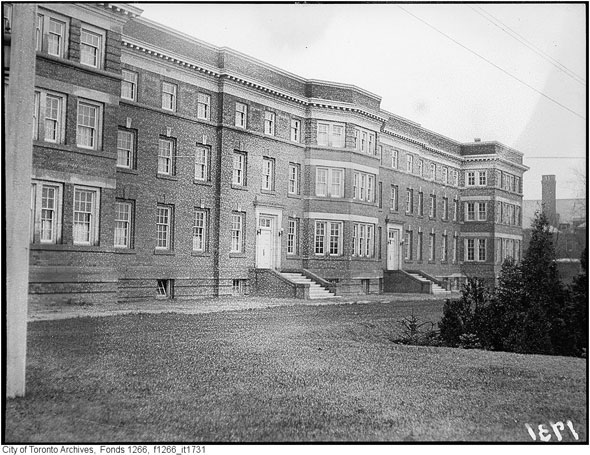
Nurses quarters at Riverdale Isolation Hospital
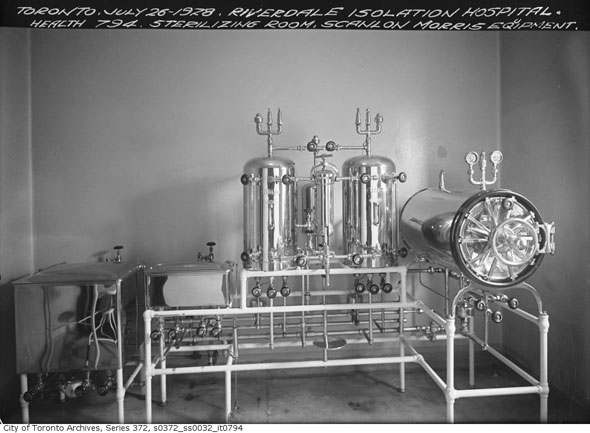
Sterilization equipment
Images: House of Refuge, c. 1860. Toronto Public Library, TRL, Historial Picture Collection, B 4-66b., Toronto Public Library, City of Toronto Archives, and Cicada Design.
Latest Videos
Latest Videos
Join the conversation Load comments

